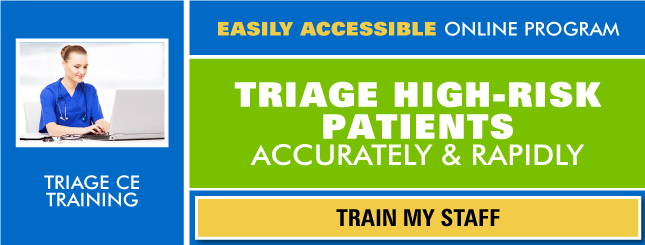
Accurate triage of patients in an emergency department is critical to timely care and patient safety.
Read these four clinical tips for triage nurses based on recent trends spotted by RSQ® Collaborative Triage Champion, Shelley Cohen, RN, MSN, CEN.
1) Pertussis: Not Just for Kids Anymore!
Pertussis is a highly contagious disease that is usually spread by coughing/sneezing. The patient is contagious up to 2 weeks after the cough begins; antibiotics shorten this period of time. There are 2 stages to the disease.
- Catarrhal: Low-grade fever, coryza (inflammation of mucous membranes in nose), mild cough
- Paroxysmal: Coughing (may hear "whooping"), vomiting, exhaustion
- Convalescent: Gradual recovery, with cough lasting 2-3 weeks
2) Fatal Ingestions in Children
Ingestion of disc batteries is the most common cause of fatal ingestions in children less than 5 years of age. When ingested, disc batteries can result in aortoesophageal and other fistulas. More than 90% of these fatalities are associated with lithium-type disc batteries.
3) Pain Presentation
When making a triage decision, consider your triage guidelines and always apply pain level recommendations from the Emergency Severity Index (ESI) or Canadian Triage and Acuity Scale (CTAS). Keep in mind that frequent users complaining of pain my actually have an emergency!
4) Key Do's and Don'ts
- Do
- Position patients with hemodynamic compromise as at least a Level 2 patient.
- Apply triage written protocols when appropriate.
- Use critical thinking when making a triage decision.
- Don't
- Anchor on the vitals so much that you miss the red flags. Assign a triage level based on how busy the department is.
Non-compliance with triage practice standards will impact patient outcomes.
To bring more tips like these into your ED, consider our Triage Fundamentals online education program. Learn more at the link below.
View post as an image here:



